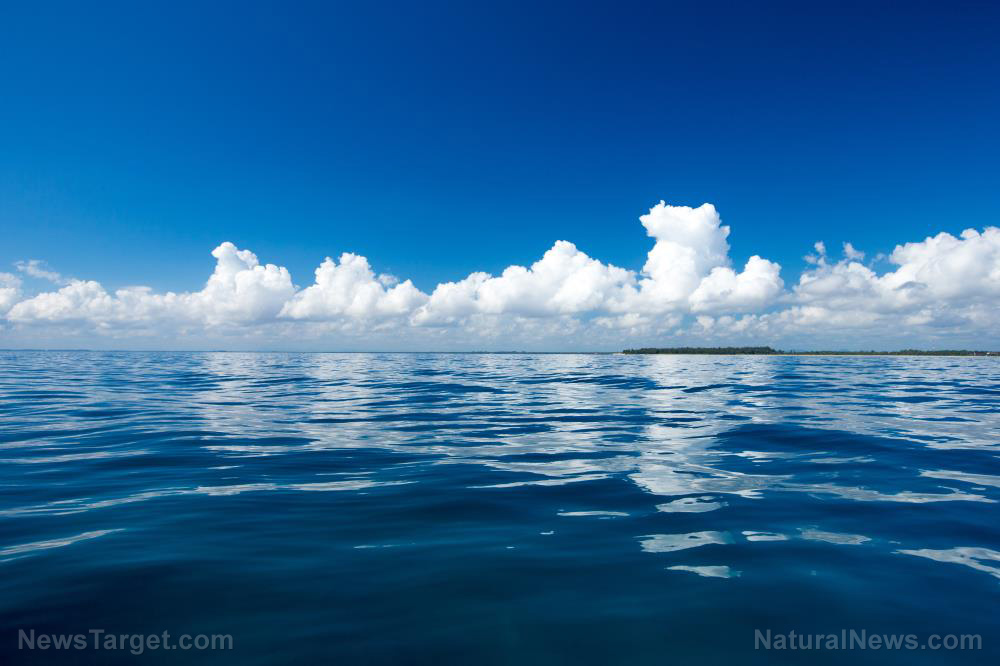Researchers discover huge freshwater pocket off the East Coast, beneath the sea coast
03/01/2020 / By Arsenio Toledo

Off the northeastern coast of the United States, researchers have found a gigantic freshwater aquifer hiding underneath the Atlantic ocean.
An aquifer is an underground layer of water. This particular aquifer’s exact size is still unclear, but the researchers believe it has the potential to be the largest known aquifer to date. For comparison, the largest currently known aquifer is the Great Artesian Basin in Australia, which stretches over 22 percent of Australia, covering approximately 670,000 square miles, and at its deepest, can reach as far as 1,600 feet below the surface. Similar aquifers of varying sizes are located all over the world and are considered a global phenomenon. The United States alone has dozens of primary aquifers, which are highly utilized as a source of freshwater.
The researchers currently believe that the aquifer can stretch from the southern shores of New Jersey to as far north as Martha’s Vineyard in Massachusetts. This entire coast, around 220 miles long, includes the coastlines of Rhode Island, New York and Connecticut. The entire aquifer may contain at least 670 cubic miles of water.
Scientists have theorized about the aquifer for decades
Many scientists have believed that an aquifer was located off the northeastern coast of the United States since at least the 1970s. When oil companies began drilling the coast, they would sometimes hit freshwater instead. However, it wasn’t entirely clear if the freshwater was just an isolated pocket or it covered a larger swathe of the Earth.
One of the co-authors, Kerry Key, a geophysicist of the Lamont-Doherty Earth Observatory at Columbia University, was previously employed helping oil companies pinpoint where oil might be located by using electromagnetic imaging on the sea floor. Key’s electromagnetic imaging can detect objects hidden from view using electromagnetic waves. Instead of helping oil companies, he decided to take his technology with him and tweak it in an effort to find aquifers.
Which is why, in 2015, he and Rob Evans, co-author and senior scientist of geology and geophysics at the Woods Hole Oceanographic Institution, spent 10 days taking measurements off the coast of the northeastern United States. They chose spots all over the southern coast of New Jersey and up toward Martha’s Vineyard in Massachusetts because oil companies previously reported finding freshwater in those areas.
To investigate the areas, Key, Evans and another co-author, Chloe Gustafson of Lamont-Doherty, dropped instruments to the sea floor to measure the electromagnetic fields. They also had equipment that emitted artificial electromagnetic pulses, which they used to measure the reactions from the sea floor. They did this because saltwater conducts electromagnetic waves far better than freshwater. This means that sources of freshwater would stand out in their readings.
Their analysis found that the freshwater wasn’t limited to isolated pockets, but was instead continuous. It started from the shoreline and extended out into the ocean, as far as 75 miles out in some places. This aquifer also ran very deep. It began around 600 feet below the sea floor and ended at around 1,200 feet. According to the researchers, this aquifer is likely very old. They suspect it came into being around 15,000 to 20,000 years ago, during the last Ice Age.
While this sounds like great news, more work must be done to learn more about the aquifer. For starters, its exact size still needs to be determined. Furthermore, the aquifer’s location at the ocean means that the water may need to be desalinated before it can be used for drinking. Fortunately, Key said that the desalination process would be cheaper for the aquifer water than with regular saltwater because it mostly contains only around 15 parts salt per thousand, significantly lower than the 35 parts salt per thousand in seawater. (Related: Researchers develop a procedure that can extract diesel fuel from water and soil.)
“We knew there was fresh water down there in isolated places, but we did not know the extent or geometry,” said Gustafson in a statement. “It could turn out to be an important resource in other parts of the world.”
Sources include:
Tagged Under: aquifers, atlantic ocean, breakthrough, discoveries, Ecology, environ, fresh water, freshwater aquifer, Oceans, research, water
RECENT NEWS & ARTICLES
COPYRIGHT © 2017 DISCOVERIES NEWS


















